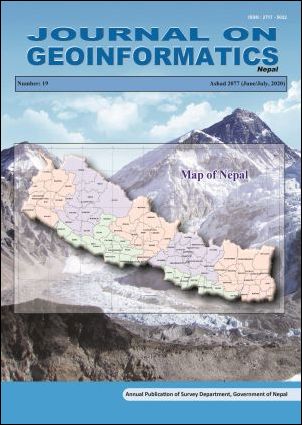Application of Hydrodynamic (HEC–RAS) Model for Extreme Flood Analysis in Far-West Province: A Case Study of Chamelia River Basin, Darchula District, Nepal
DOI:
https://doi.org/10.3126/njg.v19i1.50961Keywords:
Flood Frequency, Hydrodynamic Model, Flood Hazard, Chamelia River BasinAbstract
Nepal is mountainous country originates the several rivers, rivulets and tributaries in different watershed systems mostly from higher level at north to lower level at south part of the country. Some research pointed prediction of the extreme flood level in such low land area can reduce hazard level significantly in the contest of Nepal. The HEC−RAS model is a one of the very successful tools for the rising of water level, flood hazard and inundation forecast purpose. Therefore, in the Chamelia river basin also applied this model for prediction of extreme flood analysis. In this regards Chamelia hydrological station observed extreme flood data (1965−2015) was used for frequency analysis by Gumbel’s method. The frequency analysis in different return period 2, 5, 10, 20, 50, 100, 200, 500 and 1000 year results generated design flood of 364 m3/s, 516 m3/s, 617m3/s, 713 m3/s, 838 m3/s , 932 m3/s, 1025 m3/s, 1149 m3/s and 1242 m3/s magnitudes respectively. Flood hazard maps were prepared according to this generated flood magnitude by exporting the Hydrodynamic (HEC−RAS and HEC−GeoRAS) model into the ArcGIS environment the height of water level, flood hazard and inundation areas in different cross-sectional were identified in the Chamelia river basin.




